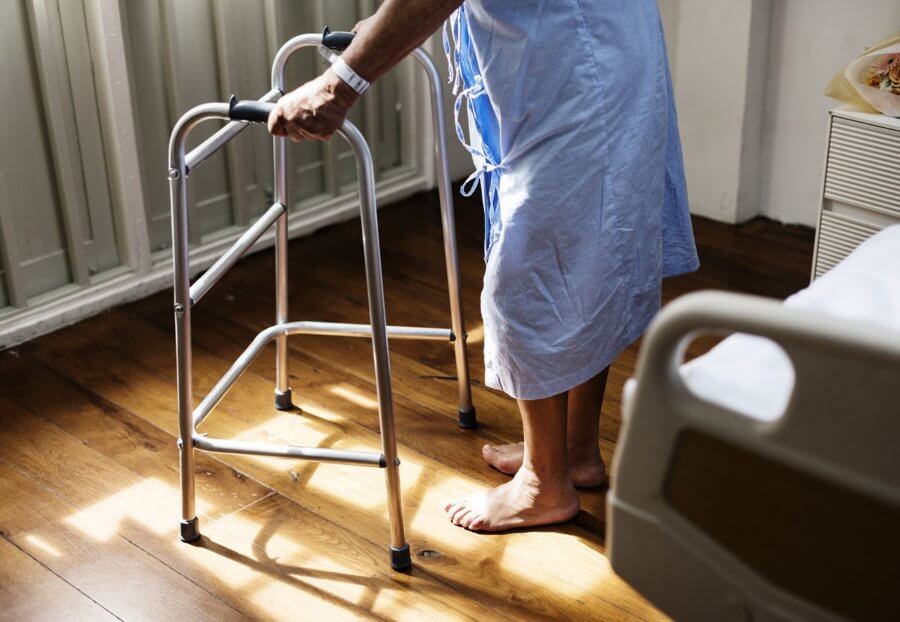Robots in elderly healthcare
Nowadays the rising number of older people is a significant concern. It is because of the predicted strain on health care services. In this period of life, people have to undergo a lot of problems. To solve these problems is a very crucial case. Moreover, in this fast moving world, there is no time to look after these elders. You may think of nursing homes. But they will raise gaps between people within a family. Also, there is an alternative to travelling to the hospital which may be stressful and frequent nurse visits are costly and time prohibitive. However, at present, there are many health care robots available in the market to help these seniors.
A health care robot is a robot which helps us promote or monitor our health. It assists with tasks that are difficult to perform due to health problems. Healthcare robots have many different functions and are categorized as either rehabilitation robots or social robots. Rehabilitation robots are physically assistive devices. These robots are not primarily communicative. To perform a physical task or make a task easier for the user is their primary job.
On the contrary, social robots are easily understood and friendly interface for older people. The older people can interact with these robots as their companions.
And much like Amazon’s famous Echo for the home, these robots talk, remind people of meetings, understand speech, keep track of shopping lists and play music. Its primary means of communication with people is speech, but with an additional touch screen that features simple icons for things like medication. These robots also help a person to perform a task.
“We did many experiments in Europe with seniors, at home, and in nursing homes, and got a great reaction from the residents and caregivers. Once the robot is installed and works, it’s effortless”, said Vincent Dupourque, the founder of Robosoft.
| Recommended for you | |
| 10 Innovative startups in elderly healthcare USA | |
| Now age with pride: Digital health startups transform elderly healthcare | |
| Hygiene robots to clean hospitals automatically |
Companies producing health care robots
There are many firms around the world, which are building healthcare robots. Here are two major companies changing the landscape of robotics in health care:
- Luvozo PBC: The company was founded in 2013. It has been focusing on developing solutions for improving the quality of life for older adults. Sam is one of their important products.
- AIST: It is a Japanese company. The company developed PARO which is an advanced interactive robot.
- Robosoft: It is a France based company which introduced Kompaï robots for the elderly care.
Some healthcare robots in the market
- Care-O-bot: This is a human-like robot. It has a head with a static face. It is approximately 1.5 meters tall. The country of origin of the product in Germany. The functional capabilities of the product are as follows: Walking and navigation aid, fetch and carry task objects, controls security and home environment, monitor health and person safety, heating food, telepresence system, cleaning tasks (putting items away, setting the table, watering plants, sorting laundry), medication reminder.
- HRIB: This is a machine-like robot. It does not have any head or face. It is approximately 1 meter. The country of origin of the product in Japan. The issue to be addressed with this product is bathing. It helps a person to have his/her bath comfortably without any help of other people.
- Kompaï robots: They talk, understand speech, remind people of meetings, keep track of shopping lists and play music. Their primary means of communication with people is speech, but with an additional touchscreen that features simple icons for things like medication. They have the addition of a screen that works as a video conference system for users to talk with health care providers as well as friends and family.
Market size and future
Advancements in artificial intelligence and humanoid designs equip the robots to go even further and have conversations with seniors that keep ageing minds sharp and fend off loneliness and isolation. These robots use 3G and 4G Wi-Fi networks to connect to the Internet and to stream real-time audio and video. Also, future generations of these robots will be equipped with visual abilities.
International Data Corporation, a research firm, said that global robotics spending in 2015 was $71 billion. And it is set to grow at a compound annual growth rate of 17%.
The firm also said that worldwide spending on robotics and related services would hit $135.4 billion in 2019. By 2030, the number of elders in the world will be doubled from 600 million today, while a deficiency of caregivers for the elderly will also rise dramatically. So, there is no denying the fact that there is a high potentiality in medical robots sector as there is an increasing demand for advanced treatment methods for various severe diseases.
The idea of ‘ROBOT FOR EVERY HOME’ seems to be expensive and unusual. But robots are finding their way to enter into every house may be in the near future.
Image credit: www.pixabay.de

















